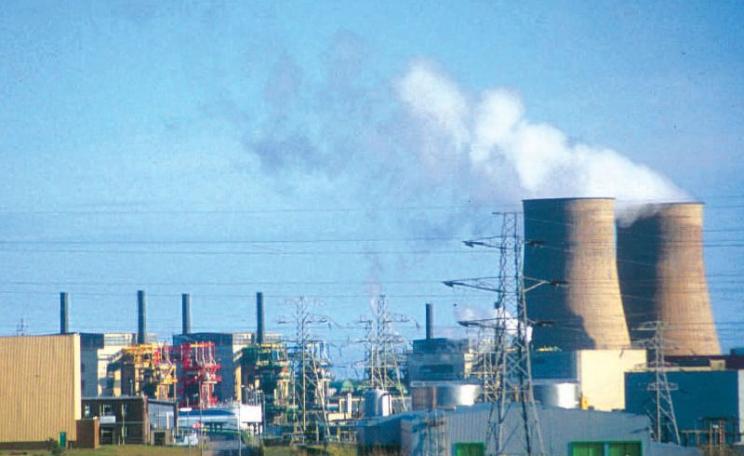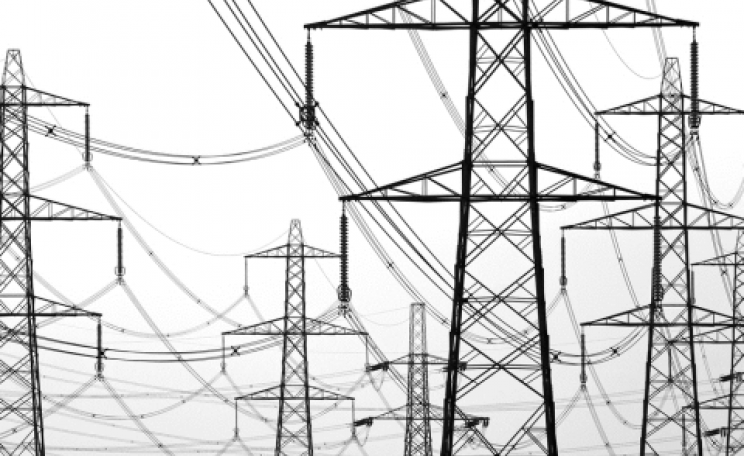Radioactive gases released from the reactor would be sucked through existing 'pinhole' containment flaws in the AP1000 Shield Building due to the 'chimney effect', potentially leading to the rapid venting huge amounts of radioactivity to the environment.
NuGen, a consortium of Toshiba and Engie (formerly GDF Suez), is proposing to build three AP1000 reactors at Moorside in Cumbria - a site adjacent to Sellafield.
The AP1000 reactor is a pressurised water reactor (PWR) designed and sold by Westinghouse Electric Company, now majority owned by Toshiba. But unlike other PWR designs it is what is called an advanced passive design.
The idea behind advanced passive design is that it shouldn't require operator actions or electronic feedback in order to shut it down safely in the event of a loss of coolant accident (LOCA). Such reactors rely more on natural processes such as natural convection for cooling and gravity rather than motor-driven pumps to provide a backup water supply.
Westinghouse claims that AP1000 plant safety systems are able to automatically establish and maintain cooling of the reactor core and maintain the integrity of the containment which holds in the radioactive contents indefinitely following design-basis accidents.
The AP1000 design is a curious choice. Construction has so far commenced on ten AP1000s, six in the US and four in China, and another three are scheduled to begin soon. However two of the ten have been suspended, presumed abandoned, and the other eight are all running several years late and hugely over cost. Not one has ever been completed.
But a new report published today highlights a completely separate problem: the design is intrinsically unsafe.
'Weaker containment, less redundancy in safety systems, fewer safety features'
A design objective of the AP1000 was also to be less expensive than other designs, by using less equipment than competing designs. The design decreases the number of components, including pipes, wires, and valves. The AP1000 has:
-
fewer safety-related valves
-
fewer pumps
-
less safety-related piping
-
less control cable
-
less seismic building volume
Westinghouse claims that this enhances safety because there are fewer active components to go wrong. In contrast the Union of Concerned Scientists (UCS) says that "the Westinghouse AP1000 has a weaker containment, less redundancy in safety systems, and fewer safety features than current reactors."
Radioactive gases released from the reactor would be sucked through existing 'pinhole' containment flaws in the AP1000 Shield Building due to the 'chimney effect', potentially leading to the rapid venting huge amounts of radioactivity to the environment.
There is a great deal of uncertainty about how these passive approaches would actually work in practice, and since, like the EPR reactor proposed for Hinkley Point C, there are no operating AP1000s anywhere in the world, there is no operating experience to draw from.
Conventional reactors rely on 'defence-in-depth' made up of layers of redundancy and diversity - this is where, say, two valves are fitted instead of one (redundancy) or where the function may be achieved by one of two entirely different means (diversity). In contrast 'advanced passive' designs rely much more on natural processes such as natural convection for cooling and gravity rather than motor-driven pumps to provide a backup water supply.
That may sound like a good idea in principle, however the AP1000 'advanced passive' nuclear reactor design has a weaker secondary containment, and fewer back-up safety systems than current reactor designs.
Nuclear engineer Arnie Gundersen, of US-based Fairewinds Associates, has repeatedly warned that the AP1000 design suffers from a design flaw which makes it vulnerable to a very large release of radioactivity following an accident if there were just a small failure in the steel containment vessel.
In that event gases released from the reactor would be sucked through existing 'pinhole' containment flaws in the AP1000 Shield Building due to the 'chimney effect', potentially leading to the rapid venting huge amounts of radioactivity to the environment.
Recent experience with existing reactors, collated by Fairewinds, suggests that containment corrosion, cracking, and leakage is more common than previously thought, and AP1000s are more vulnerable to containment corrosion than conventional reactors.
In addition the AP1000 shield building lacks flexibility and so could crack in the event of an earthquake or aircraft impact.
The AP1000 reactor design should be rejected!
Although the Fukushima reactors were not AP1000s Fairewinds has reviewed the design in the light of the Japanese accident to see if there are lessons which can be learnt which might apply to all reactor types and AP1000s in particular. Its report concluded that:
-
Ongoing nuclear fission after a reactor has supposedly been shutdown continues to be the source of significant pressure inside the containment. The AP1000 containment is extraordinarily close to exceeding its peak post accident design pressure which means post accident pressure increases could easily lead to a breach of the containment.
-
At least seven ways in which an AP1000 reactor design might lose the ability to cool the reactors in an emergency have been identified. These include damage to the water tank which sits on top of the shield building and some sort of disruption to the air flow around the steel containment.
-
The accidents at Fukushima, especially the overheating and the hydrogen explosions in the Unit 4 Spent Fuel Pool showed that the calculations and assumptions about the AP1000 Spent Fuel Pond design were wholly inadequate.
-
Fukushima showed that when several reactors share a site an accident at one reactor could damage other reactors. In the AP1000 the water tank on top of the reactor, and the shield building could be vulnerable to damage.
-
Westinghouse assumes that there is zero probability of an AP1000 containment breach. But the accidents at Fukushima have shown that there is a high probability of Containment System failure resulting in significant releases of radioactivity directly into the environment.
The nuclear regulators - the Office for Nuclear Regulation (ONR) and Environment Agency - have been carrying out a new process called 'Generic Design Assessment' (GDA), which looks at the safety, security and environmental implications of new reactor designs before an application is made to build that design at a particular site.
Initially the GDA for the AP1000 was expected to be completed around spring 2011, when the regulators would have issued a statement about the acceptability of the design. In December 2011 the Regulators issued only an interim approval. At that point Westinghouse decided to request a pause in the process. The process has now resumed and is expected to be completed by March 2017.
The GDA process is being carried out in what is described as 'an open and transparent manner', designed to facilitate the involvement of the public, who are able to view and comment on design information published on the web.
That gives us all the chance to 'blow the whistle' on a reactor design with serious built-in flaws - one that should never be approved for use in the UK or any other country.
Make your views known: Questions and comments can be submitted electronically via the Westinghouse website, or direct to the UK regulators. The deadline for making a comment on the AP1000 plant, as part of the GDA process is 30th November 2016. The Office of Nuclear Regulation's comments process document describes the process in more detail.
The report: 'The AP1000 Nuclear Reactor Design' is written by Peter Roche, November 2016, and commissioned by Radiation Free Lakeland.
Peter Roche is an energy consultant based in Edinburgh and policy adviser to the Nuclear Free Local Authorities. Until April 2004 he was a nuclear campaigner for Greenpeace UK for thirteen years. He has an honours degree in Ecological Sciences from Edinburgh University. He was co-founder of the Scottish Campaign to Resist the Atomic Menace (SCRAM) in 1976, which organised some of the largest anti-nuclear power demonstrations in the UK at the Torness nuclear station outside Edinburgh in the 1970s and 80s.
No2nuclear power: Peter Roche also edits the no2nuclearpower website which produces a daily nuclear news update - essential reading for all working or campaigning in the nuclear field.




